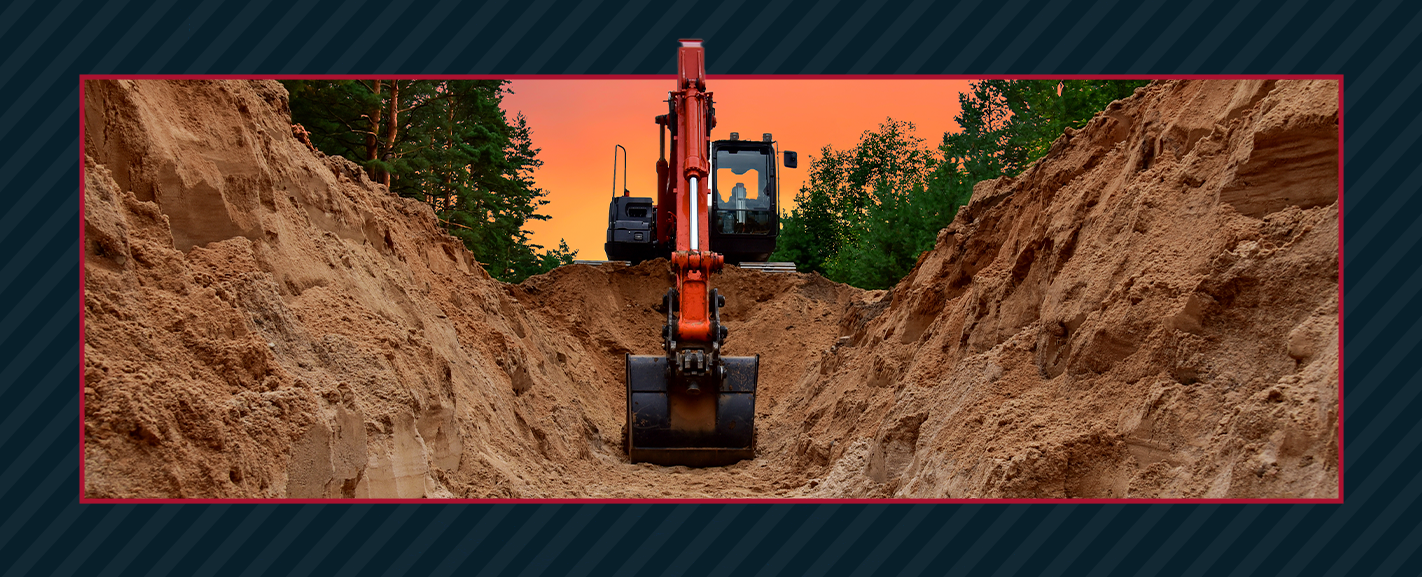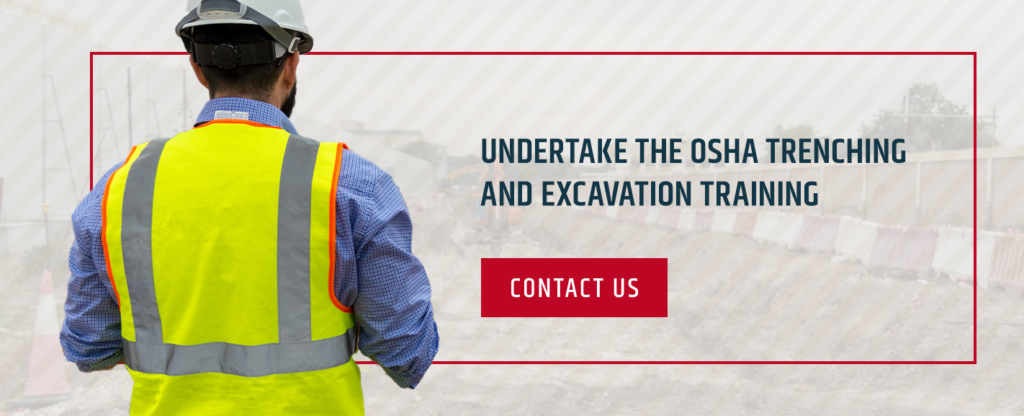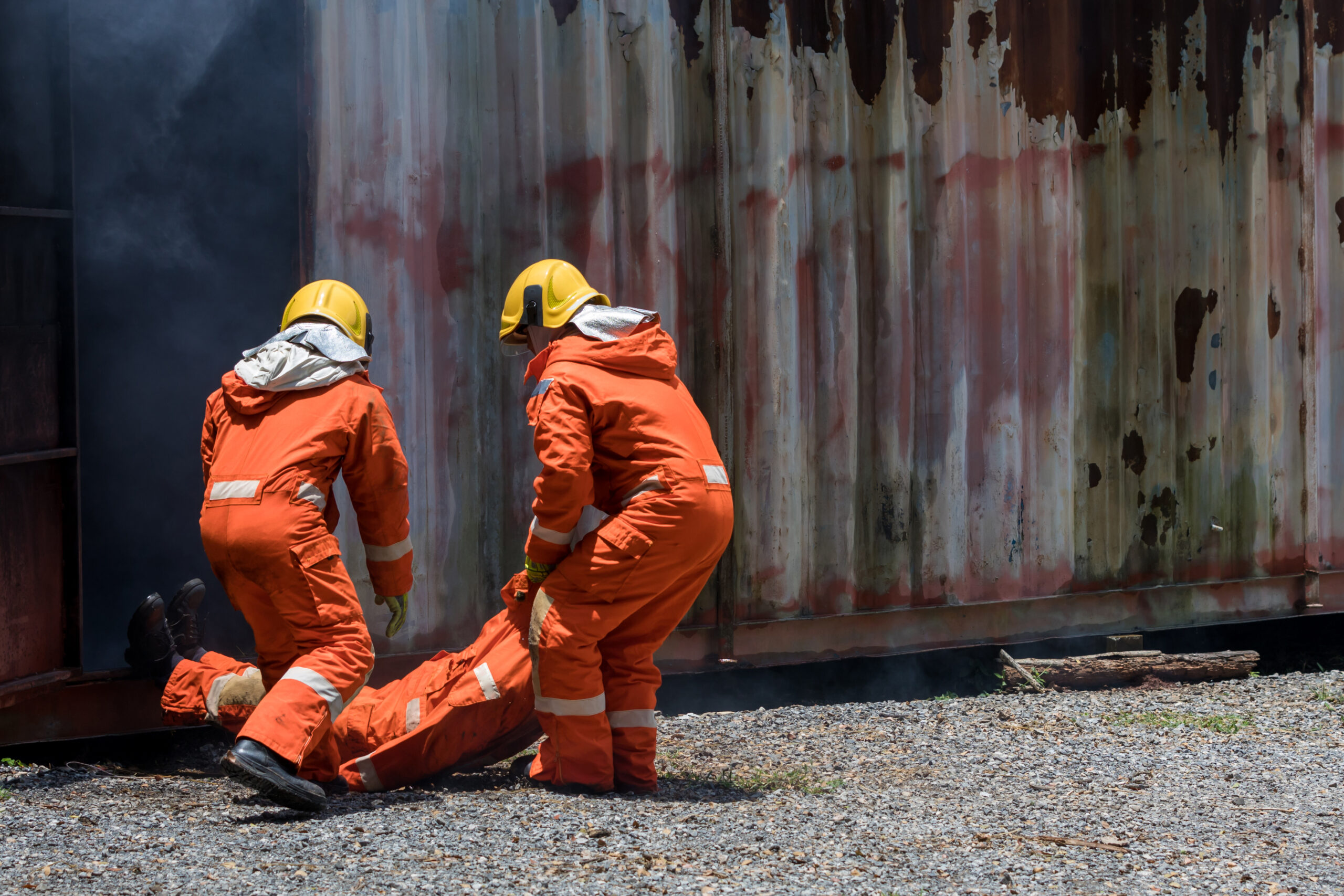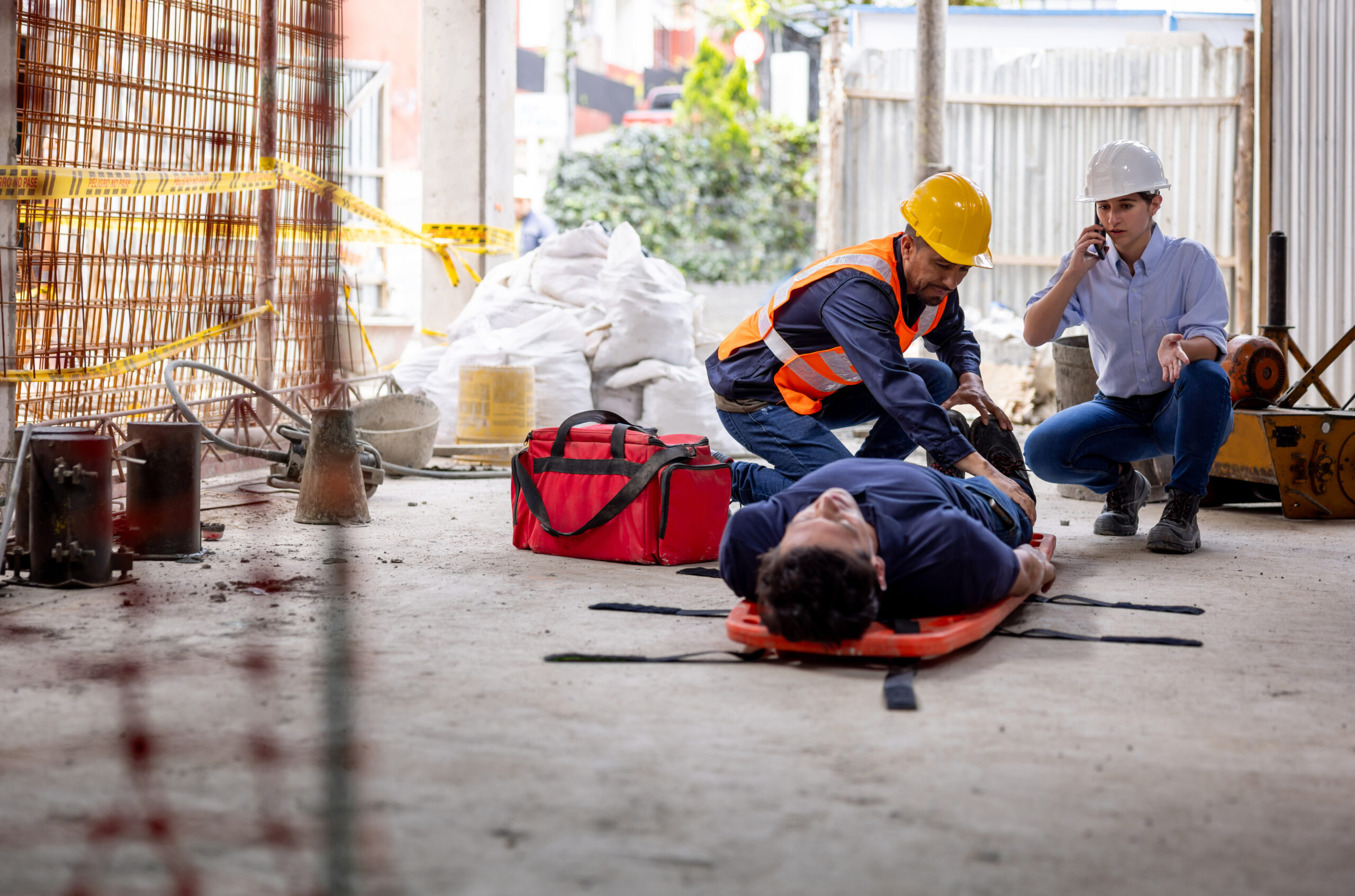OSHA Guidelines for Trenching and Excavation

Trenching and excavation can be extremely dangerous. Cave-ins or collapsing trenches pose the greatest threat to workers. While eliminating such tragic incidents is challenging, complying with the Occupational Safety and Health Administration’s (OSHA) trenching and excavation guidelines can help reduce these risks. The regulations require workers in such dangerous conditions to undergo training to help protect themselves and others.
What Are Trenches and Excavations?
OSHA distinguishes between a trench and an excavation. A trench is a narrow excavation made below the surface of the ground. Conversely, excavation is an artificial trench, cut, cavity, or depression in the earth’s surface formed by earth removal. The distinction is important because of the differences in the construction process and associated hazards.
What Are the Common Trenching and Excavation Hazards?
Workers who operate underground in trenches and excavations are exposed to several hazards, such as:
- Cave-ins
- Hazardous atmosphere
- Falling loads
- Falls
- Toxic gas release
These hazards can cause severe injuries and fatalities, making following OSHA guidelines crucial. Employers need to ensure workers are adequately trained to observe these standards to mitigate the threats they pose.
What Are the OSHA Trenching and Excavation Regulations?
OSHA’s trenching and excavation standards are provided under 29 Code of Federal Regulations (CFR) Part 1926, Subpart P. The guideline covers areas such as the following:
1. Preplanning
Regardless of how many projects you have worked on, it’s essential to approach each differently. Most incidents result from inadequate planning. Before bidding on a project, employers should examine the job site to determine what they need to perform the job safely and follow OSHA regulations. A comprehensive checklist should cover factors like:
- Weather
- Soil classification
- Location of the water table
- Surface and groundwater
- Quantity of shoring or other protective systems required
- Overhead and underground utilities
Employers may gather information by observing the job site, testing the soil type and conditions, and consulting with relevant agencies.
2. Trench Safety Measures
Trenches 5 feet deep or more must have a protective system unless the excavation is done entirely in stable rock. For those less than 5 feet deep, a competent person may decide whether a protective system is required.
If the trench is 20 feet deep or more, a registered professional engineer must design the protective system or be based on tabulated data, which the engineer prepared or approved according to 29 CFR 1926.652(b) and (c).
3. Competent Person
OSHA standards require a competent person to inspect trenches daily and upon a change in condition before any workers enter. The aim is to mitigate excavation hazards. Yet, the question remains — who is a competent person?
Under 1926.650(b), a competent person is an individual who can identify existing and predictable hazards or hazardous, dangerous, or unsanitary working conditions. They also have the authority to take immediate corrective measures to prevent the hazard from occurring.
Under the guidelines, the tasks a competent person performs include the following:
- Classifying soil
- Inspecting protective systems
- Designing structural ramps
- Conducting site inspections
- Monitoring water removal equipment
4. Soil Classification
Generally, the excavation standards require a competent person to classify soil and rock deposits into four categories. These are:
- Stable rocks
- Type A soils
- Type B soils
- Type C soils
These classifications are based on several factors, including the soil’s unconfined compressive strength — the load per unit area at which the soil fails in compression. The soil’s unconfined compressive strength can be tested in the laboratory or estimated in the field using the thumb penetration test or a pocket penetrometer.
Protective Systems
OSHA guidelines provide different protective systems, including the following:
- Benching: This technique protects workers from cave-ins by benching the sides of the excavation to form horizontal levels with vertical surfaces in between. Benching is incompatible with type C soils.
- Shoring: With shoring, the excavation is supported with tools like aluminum plates and hydraulic bars to prevent soil movement and cave-ins.
- Sloping: Sloping cuts the trench wall back at an angle inclined away from the excavation.
- Shielding: This method uses trench boxes or other types of support to prevent soil cave-ins.
5. Access and Egress
OSHA regulations provide numerous requirements regarding access and egress in excavations. Among other things, it requires heavy equipment to be kept away from trench edges. Other sources capable of affecting trench stability must be identified, and excavated soils should be moved at least 2 feet from the trench edges.
In trenches more than 4 feet deep, OSHA standards require testing for atmospheric hazards like hazardous fumes, low oxygen, and toxic gases. Again, the trenches should be inspected at the beginning of each shift to ensure optimal safety. Similarly, trenches should be checked after changes in conditions, such as rainstorms or other water intrusion.
Importance of OSHA Trenching and Excavation Compliance
The primary benefit of OSHA trenching and excavation compliance is the reduction of injuries and fatalities. Although trench and excavation operations can be dangerous, training your workers and ensuring strict adherence to the regulatory requirements and best practices can reduce accidents.

OSHA trenching and excavation compliance also saves money. Employers spend lots of money on medical expenses and penalties when these avoidable accidents occur. Additionally, many companies encounter lawsuits, which can be financially draining and exhausting. With OSHA compliance, exposure to these hazards drops, saving precious lives, money, and time.
OSHA Trenching and Excavation Best Practices
Safety professionals must develop a comprehensive OSHA trenching and excavation program covering the following areas:
- Providing adequate training for workers.
- Obtaining competent and trained personnel to oversee excavation projects.
- Ensuring regular communication among workers and supervisors.
- Facilitating efficient coordination among workers and supervisors during excavation activities.
- Conducting thorough site inspections.
- Using proper protective systems.
The OSHA guidelines may initially seem complicated, but they are straightforward once you grasp the basics. That’s why investing in specialized training is essential.
Undertake the OSHA Trenching and Excavation Training
The National Association of Safety Professionals (NASP) offers a trenching and excavation safety course to help students learn the requisite workplace practices for minimizing potential risks. The course is an in-depth coverage of concepts ranging from trench shields and soil mechanics to hazards of cave-ins and engulfment. Students will learn the relative regulatory requirements to help them keep sites safe and compliant. To learn more about our offerings, contact us now!

Blog Posts
Latest Posts
Related Posts




